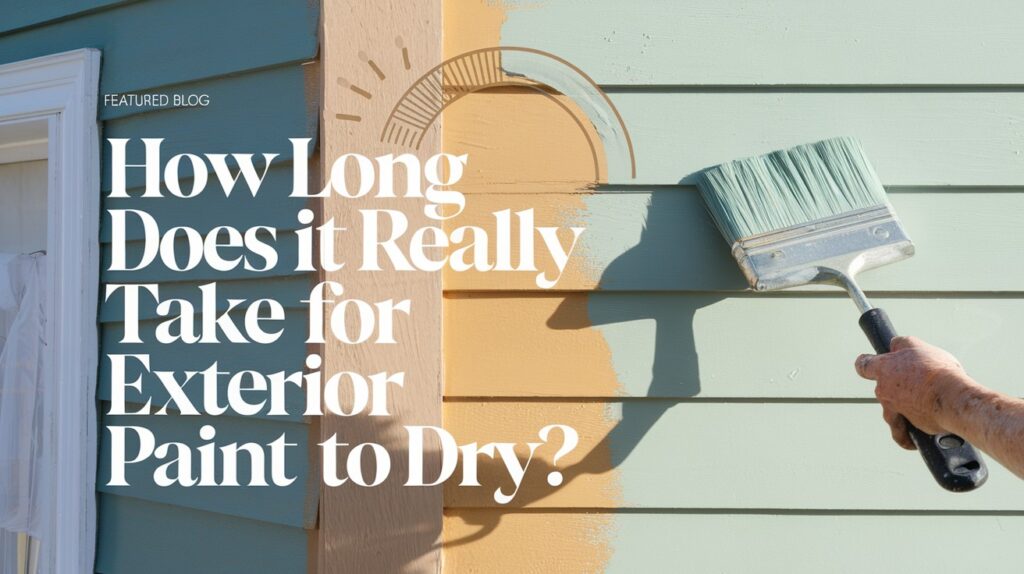Understanding how long exterior paint takes to dry can make the difference between a professional-looking finish and a disappointing mess.
Many homeowners make costly errors by applying second coats too early or exposing freshly painted surfaces to moisture before they’re ready.
These missteps often result in peeling, streaking, or uneven coverage that requires starting over. The time your paint needs depends on several critical factors: temperature, humidity levels, surface material, paint type, and weather conditions.
Getting these timing factors right ensures your hard work pays off with a durable, attractive finish that lasts for years.
This guide will walk you through each element that affects drying time, helping you plan your painting project for optimal results.
Understanding the Basics of Exterior Paint Drying
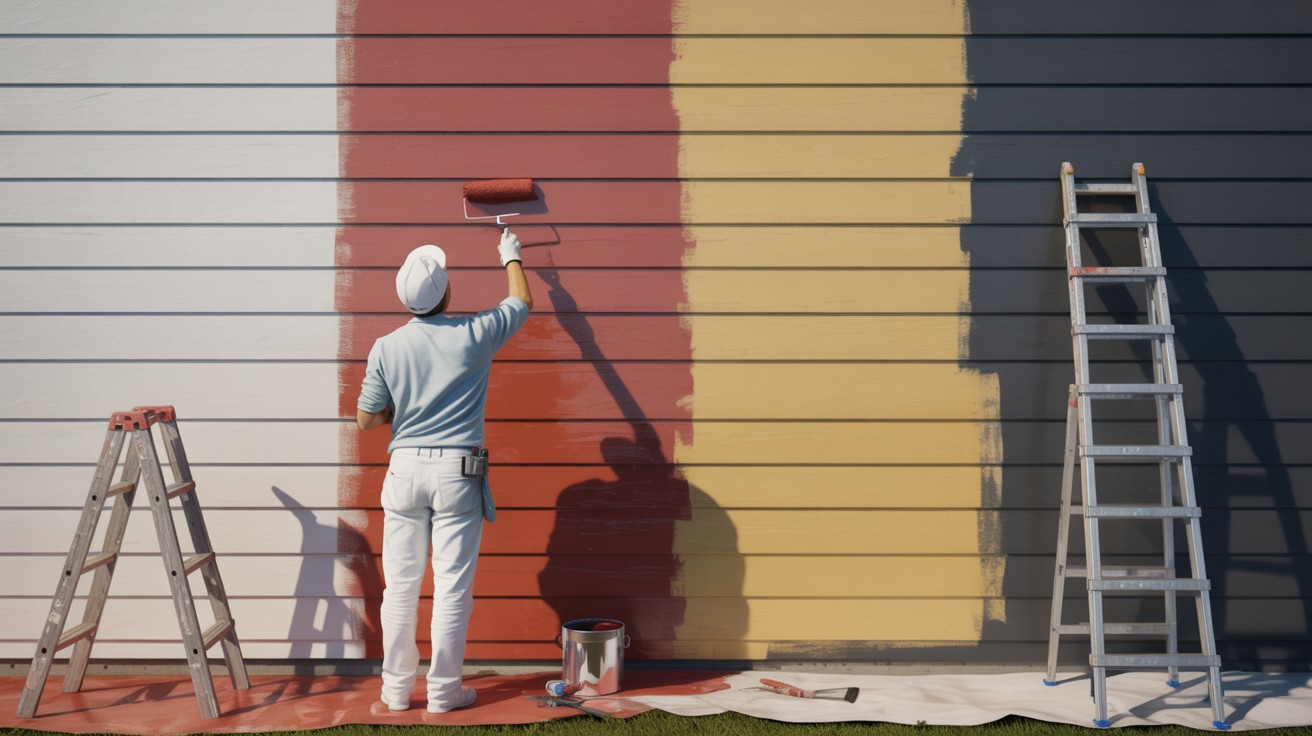
Dry vs. Cured: What’s the Difference?
When paint feels dry to the touch, it has only completed the first stage of the drying process.
This surface-level dryness typically occurs within hours, allowing you to lightly touch the surface without leaving fingerprints.
However, the paint continues hardening beneath the surface for weeks afterward.
Curing represents the complete chemical process where paint reaches maximum hardness and adhesion.
During this period, the coating bonds fully with the surface and achieves its intended protective properties.
A fully cured finish resists scratches, weather damage, and wear far better than paint that’s merely surface-dry.
Most exterior paints require 14 to 30 days to cure completely, depending on environmental conditions and paint formulation.
While you can apply additional coats once the previous layer is dry to the touch, the final durability depends on allowing adequate curing time before exposing the surface to harsh conditions or heavy use.
Key Factors That Affect Exterior Paint Drying Time
Several environmental and material factors determine how quickly your exterior paint will dry and reach full durability.
Type of Paint Used
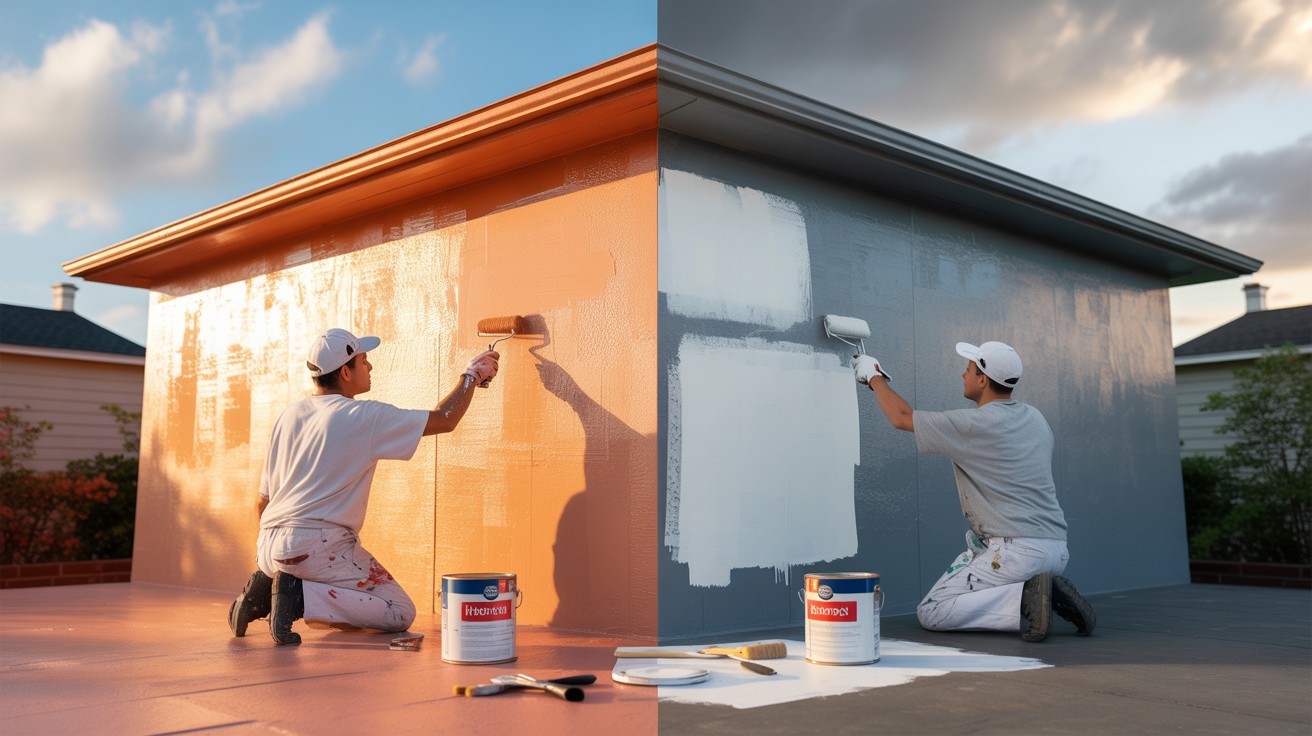
The paint formula you choose significantly impacts your project timeline.
Latex-based paint offers faster results, becoming dry to the touch within 1–2 hours under favorable conditions. However, complete curing still requires approximately 30 days.
Oil-based paint takes considerably longer for initial drying—typically 6–8 hours—but cures faster overall, reaching full hardness in 7–14 days.
Your paint selection affects more than just timing. Latex formulas clean up easily with water and emit fewer fumes, making them popular for most exterior applications. Oil-based options provide superior adhesion and durability on challenging surfaces like metal or previously painted trim.
Weather Conditions
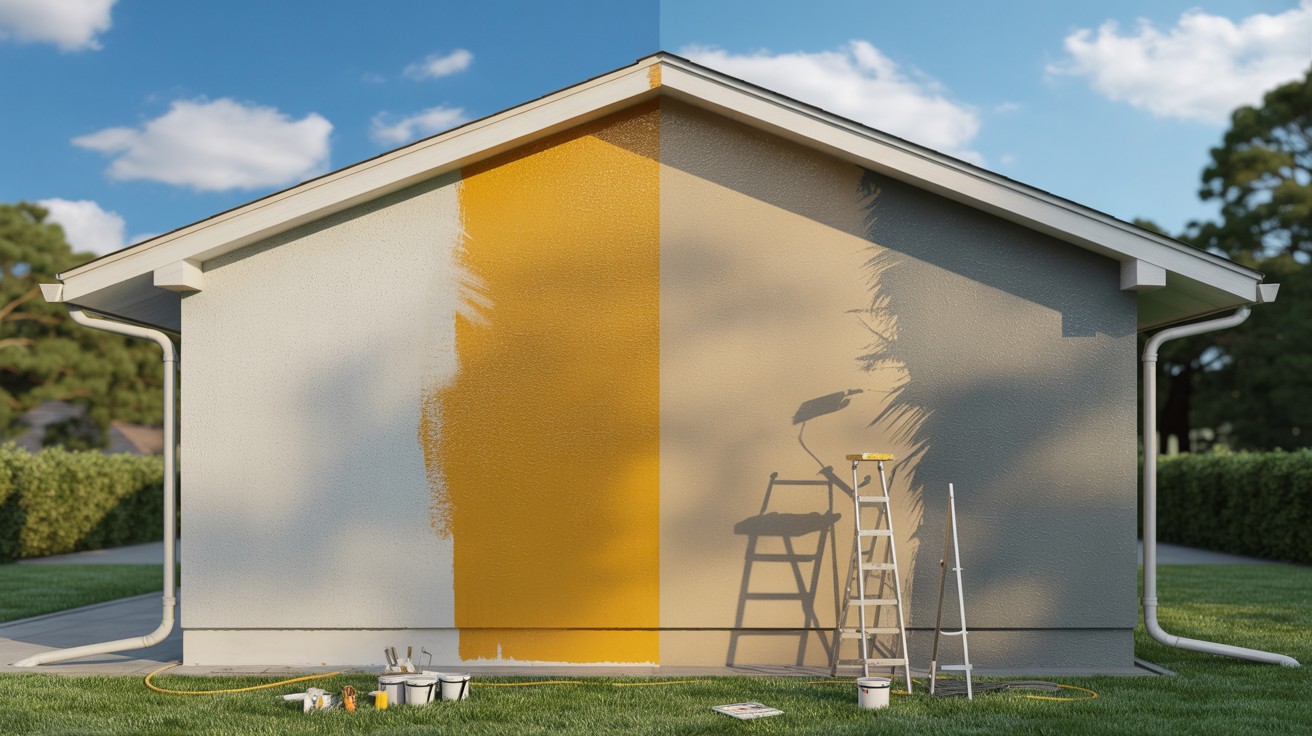
Environmental factors play a crucial role in drying success.
Temperature should stay within the ideal range of 50°F–85°F (10°C–30°C). Paint applied in extreme heat may dry too quickly, causing brush marks and poor adhesion. Cold temperatures slow the drying process and can prevent proper film formation.
Humidity levels below 50% produce optimal results. High moisture in the air prevents water from evaporating efficiently from latex paint, while oil-based formulas struggle to cure properly in humid conditions.
Wind can be beneficial or problematic depending on intensity. Light air circulation helps moisture evaporate, speeding the drying process. Strong winds, however, can blow dust and debris onto wet surfaces or cause uneven drying patterns.
Sunlight affects different paint types differently. While warmth can accelerate drying, intense direct sun may cause paint to dry too rapidly on the surface while remaining wet underneath, leading to poor adhesion and potential cracking.
Surface Type and Preparation
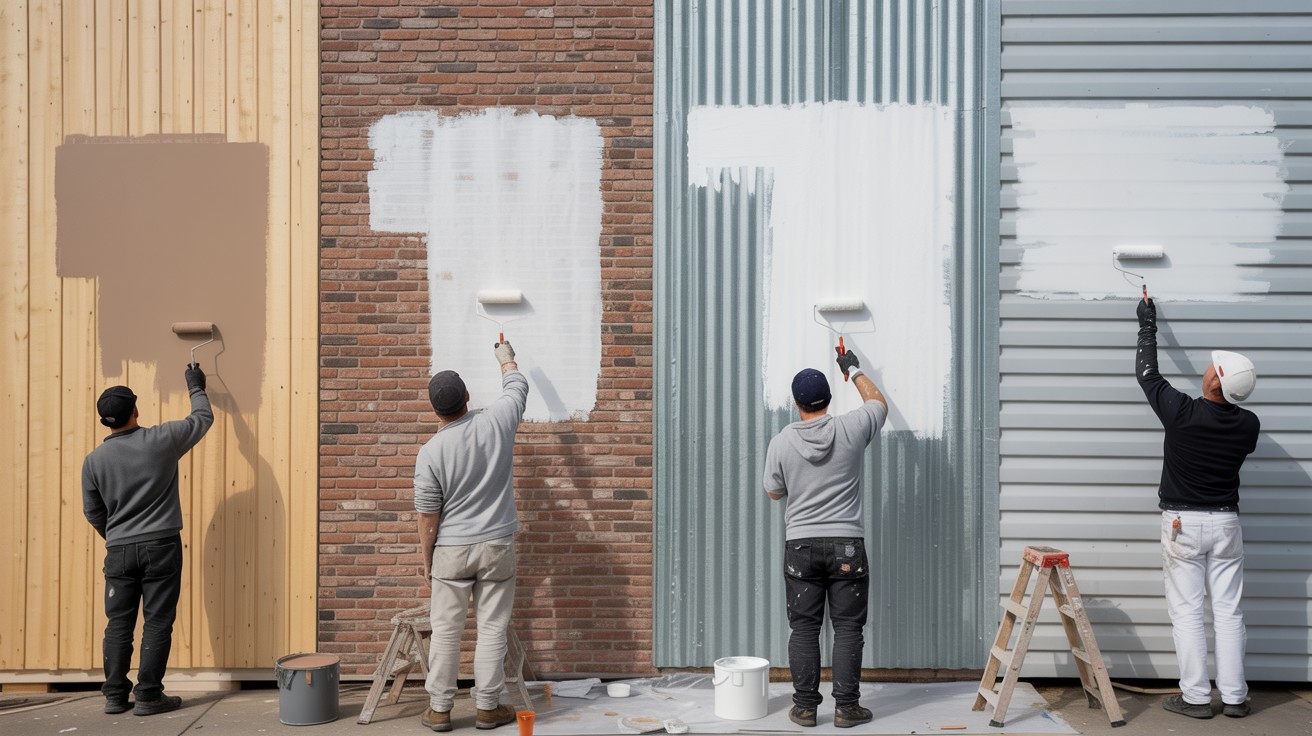
The material you’re painting dramatically influences drying time.
Porous surfaces like wood, concrete, or brick absorb moisture from paint, potentially speeding initial drying but requiring more coats for proper coverage.
Non-porous materials such as metal or vinyl don’t absorb paint, meaning all moisture must evaporate into the air.
Proper primer application creates a consistent base that helps subsequent coats dry evenly.
Skipping primer on challenging surfaces often results in poor adhesion and extended drying times as the paint struggles to bond effectively.
Number and Thickness of Coats
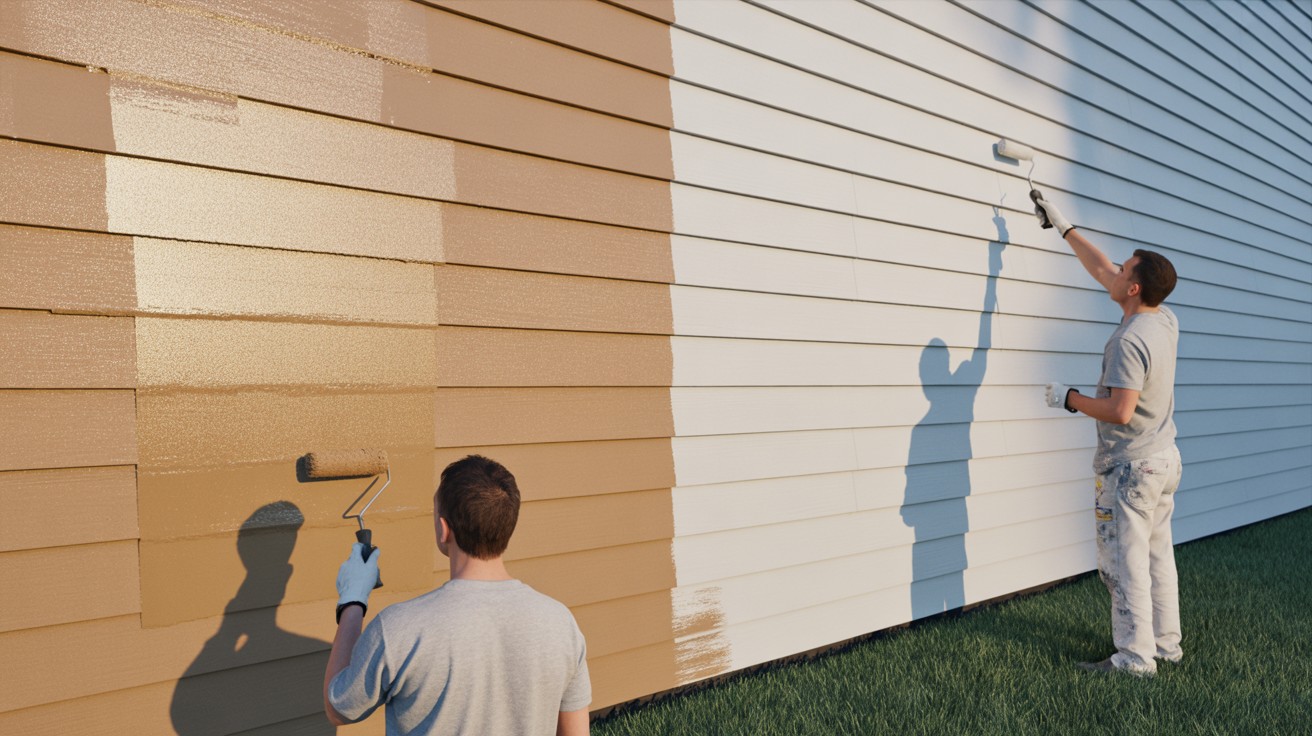
Thicker paint layers retain more moisture and take significantly longer to dry completely.
Heavy application might seem efficient, but it often leads to drips, sags, and extended curing times. Multiple thin coats consistently outperform single thick applications.
Allow adequate time between coats—typically 2–4 hours for latex and 8–16 hours for oil-based paints under normal conditions.
Applying subsequent layers too soon can cause the previous coat to lift or create an uneven finish that compromises the entire project.
Manufacturer Recommendations You Shouldn’t Ignore
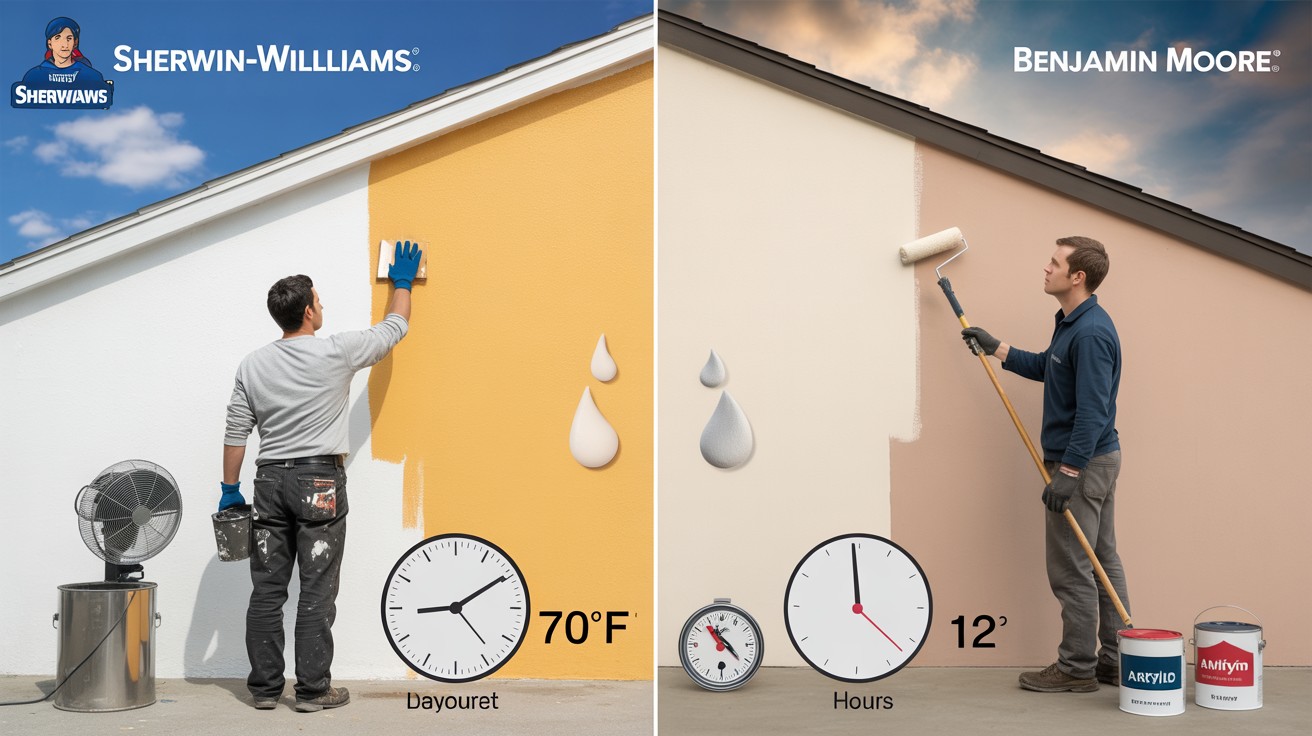
Sherwin-Williams
Sherwin-Williams specifies 2–4 hours between latex coats under normal conditions (70°F and 50% humidity).
Their guidelines emphasize that rushing this timeline can compromise adhesion and cause finish problems.
For optimal results, they recommend waiting until the previous coat feels completely dry and shows no tackiness when lightly touched.
Their curing recommendations stress patience—while you can apply additional coats relatively quickly, full film hardness takes 2–4 weeks.
During this period, avoid heavy cleaning or exposure to harsh weather when possible.
Benjamin Moore
Benjamin Moore’s latex formulations often allow recoating in just 1–2 hours under ideal conditions, making them popular for time-sensitive projects.
However, they caution that cooler temperatures or higher humidity can extend this window significantly.
For their acrylic and alkyd paint lines, Benjamin Moore recommends 4–16 hours between coats, depending on the specific product and environmental conditions.
Their technical data sheets provide detailed guidance for each formula, including minimum and maximum recoat times to ensure proper adhesion and finish quality.
Both manufacturers stress that their recommendations assume optimal conditions and may need adjustment based on your specific environment and application circumstances.
Troubleshooting Slow-Drying Paint
When paint takes too long to dry, identifying the root cause helps you fix current problems and avoid future delays.
Common Causes
- Cold, damp weather creates the most frequent drying delays. When temperatures drop below 50°F or humidity exceeds 70%, paint struggles to release moisture effectively.
- These conditions can extend drying times from hours to days, leaving your project vulnerable to dust, insects, and weather damage.
- Excessive paint thickness ranks as another major culprit. Heavy application might seem efficient, but thick layers trap moisture and solvents, preventing proper evaporation.
- This often results in a surface that appears dry while remaining soft underneath.
- Poor surface preparation also contributes to extended drying times.
- Dirty, oily, or incompatible surfaces prevent proper paint adhesion, forcing the coating to work harder to bond and dry effectively.
Fixes and Prevention
- Use fans to improve air circulation around freshly painted surfaces.
- Gentle airflow helps moisture evaporate without creating dust problems or uneven drying patterns.
- Position fans to move air parallel to the surface rather than directly at it.
- Apply thinner coats consistently rather than attempting to cover in fewer passes.
- Multiple light applications dry faster, adhere better, and produce superior final results compared to heavy single coats.
- Always read the product label before starting your project. Manufacturers provide specific temperature, humidity, and timing recommendations for their formulations.
- Following these guidelines prevents most drying problems and ensures optimal performance from your chosen paint system.
Tips for Planning a Successful Exterior Paint Project
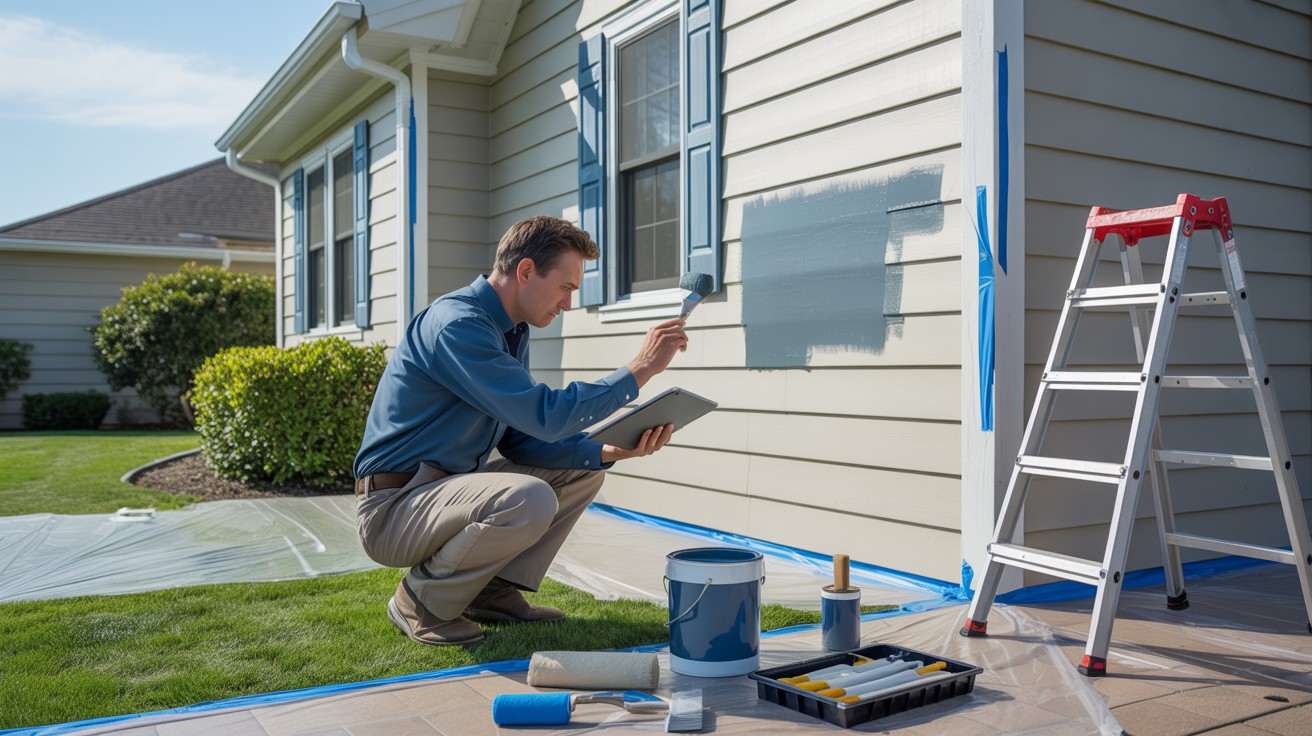
Proper planning and preparation steps help ensure your exterior painting project achieves professional results and long-lasting durability.
Check the Weather Forecast First
- Always review the extended forecast before starting your painting project.
- Rain within 24 hours of application can ruin fresh paint, requiring complete removal and reapplication.
- Strong winds blow dust and debris onto wet surfaces, creating texture problems that are difficult to fix later.
- Extreme temperatures pose equal risks. Hot weather above 85°F causes paint to dry too quickly, preventing proper leveling and adhesion.
- Cold conditions below 50°F slow drying dramatically and can prevent proper film formation, leading to poor durability and appearance.
- Plan for at least 48 hours of favorable conditions—this gives your first coat time to dry properly before any weather changes occur.
Test a Small Section
- Before committing to your entire project, apply paint to a small, inconspicuous area first.
- This patch test reveals actual drying times under current conditions, which may differ significantly from manufacturer estimates.
- Monitor your test area closely, checking for tackiness, color development, and adhesion quality.
- This hands-on approach helps you adjust your timeline and application technique before working on visible surfaces.
Protect Surfaces During Drying & Curing
- Limit foot traffic around freshly painted areas for at least 24 hours. Even when paint feels dry to the touch, it remains vulnerable to impressions and damage during the initial curing phase.
- Keep moisture away from painted surfaces whenever possible. Cover nearby sprinkler heads, redirect downspouts temporarily, and avoid washing adjacent areas until the paint has cured completely.
- These precautions prevent water spots, streaking, and premature paint failure.
Conclusion
Successful exterior painting depends on understanding four critical elements: paint type selection, favorable weather conditions, thorough surface preparation, and allowing adequate drying time.
Each factor directly impacts both the appearance and longevity of your finished project.
Always follow your paint manufacturer’s specific directions, as these guidelines are formulated for optimal performance with their products.
Rushing the process or ignoring recommended wait times between coats often leads to costly do-overs and disappointing results.
Remember that your paint job’s durability relies heavily on smart timing decisions and respecting the complete drying process.
While waiting can feel frustrating, patience during both initial drying and full curing phases ensures your investment in time, money, and effort pays off with a beautiful, long-lasting finish that protects your home for years to come.
Frequently Asked Questions
How long should I wait between coats of exterior paint?
Most latex paints allow recoating after 2-4 hours under normal conditions, while oil-based paints typically require 6-8 hours. Always check your specific paint label for exact timing, as formulations vary between manufacturers.
Can I paint if it’s going to rain tomorrow?
Avoid painting if rain is expected within 24 hours of application. Fresh paint needs adequate time to form a protective film before moisture exposure, or it may wash away or develop water spots.
Why does my paint feel tacky after several hours?
Tacky paint usually indicates high humidity, cold temperatures, or application that’s too thick. Improve ventilation and wait longer before applying additional coats to prevent finish problems.
Is it better to paint in direct sunlight or shade?
Shade provides more consistent drying conditions and prevents paint from setting too quickly. Direct sunlight can cause rapid surface drying while leaving underlying layers wet, leading to poor adhesion.
How do I know when my paint is fully cured?
Paint reaches full cure when it no longer feels soft to firm pressure and resists scratching with a fingernail. This process typically takes 2-4 weeks, depending on paint type and environmental conditions.

